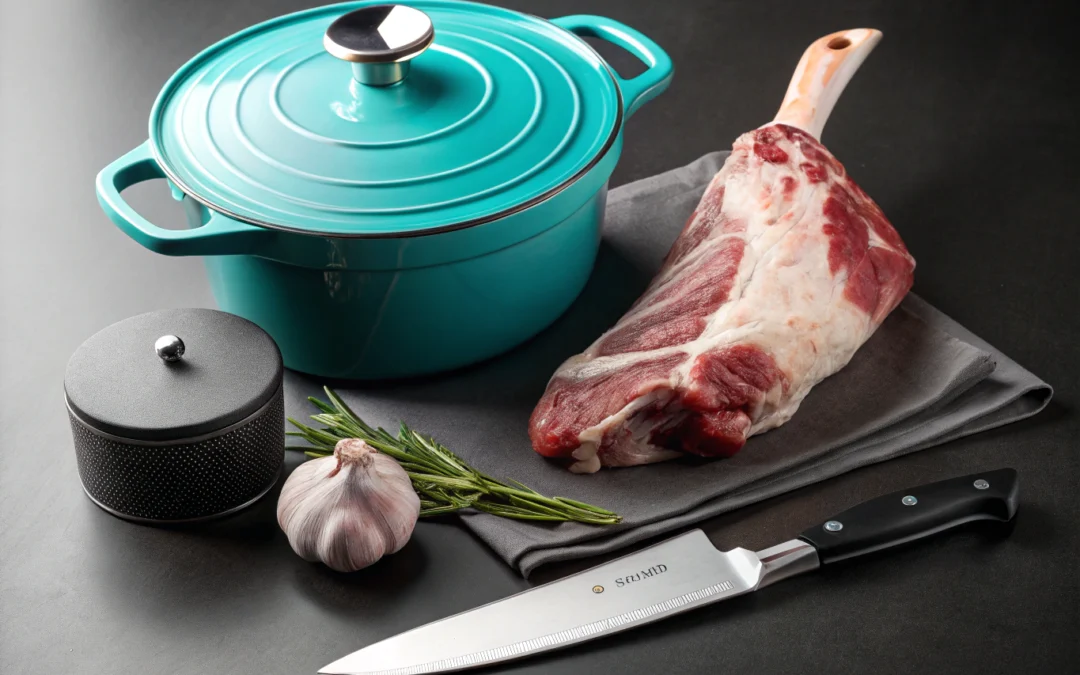Mastering the Art of Braised Leg of Lamb
When it comes to preparing a memorable meal, few dishes offer the richness and depth of flavor like a well-cooked braised leg of lamb. This cut, known for its tenderness and robust taste, benefits from slow cooking methods that transform tough muscle fibers into melt-in-the-mouth perfection. Understanding the nuances of braising lamb can elevate your culinary skills and create a centerpiece that impresses every time.
Choosing the Right Cut and Preparing It
Selecting the Best Leg of Lamb
Opt for a bone-in leg if possible. The bone adds flavor during the cooking process, and the meat tends to stay moist and tender. Look for a cut with good marbling—thin streaks of fat throughout the meat—that will render during cooking, enhancing flavor and juiciness.
Preparation Tips
Start by trimming excess fat and patting the meat dry. Season generously with salt, pepper, and your favorite herbs—rosemary and garlic are classic choices. For added depth, consider marinating the lamb overnight or at least a few hours before cooking, allowing the flavors to penetrate the meat.
The Braising Process
Creating the Perfect Liquid
Braising involves cooking the lamb slowly in a flavorful liquid. Common choices include red wine, beef or chicken broth, or a combination of both. Adding aromatics like onions, carrots, celery, and garlic can build layers of flavor. For a touch of acidity and brightness, a splash of vinegar or a squeeze of lemon can be included.
Cooking Technique
Use a heavy, oven-safe pot with a tight-fitting lid—such as a Dutch oven. Brown the lamb on all sides over medium-high heat to develop a rich crust and deepen the flavor. Once browned, add your braising liquid and aromatics, then bring it to a simmer. Cover and transfer to a preheated oven at around 325°F (160°C). Allow the meat to cook gently for 2.5 to 3 hours, or until the lamb is tender enough to fall apart with a fork.
Serving and Final Touches
Presentation Ideas
Once cooked, let the lamb rest for about 15 minutes before slicing or shredding. Serve it with the reduced braising liquid as a sauce, accompanied by hearty sides like roasted vegetables, mashed potatoes, or crusty bread. The sauce can be strained and reduced further for a velvety finish that complements the meat’s richness.
Additional Tips
To add an extra layer of flavor, consider finishing the dish with fresh herbs or a drizzle of high-quality olive oil. For a more rustic presentation, serve the shredded meat directly from the pot, allowing guests to help themselves.
Consumer Recommendations
- Choose fresh, high-quality lamb from reputable butchers or specialty markets to ensure optimal flavor and tenderness.
- Invest in a good Dutch oven or heavy braising pan—these tools help distribute heat evenly and retain moisture.
- Experiment with different liquids and aromatics to customize the flavor profile to your preference.
- Plan ahead. Braising is a slow process that rewards patience, resulting in a dish full of complex flavors.
Checkout ProductScope AI’s Studio (and get 200 free studio credits)

